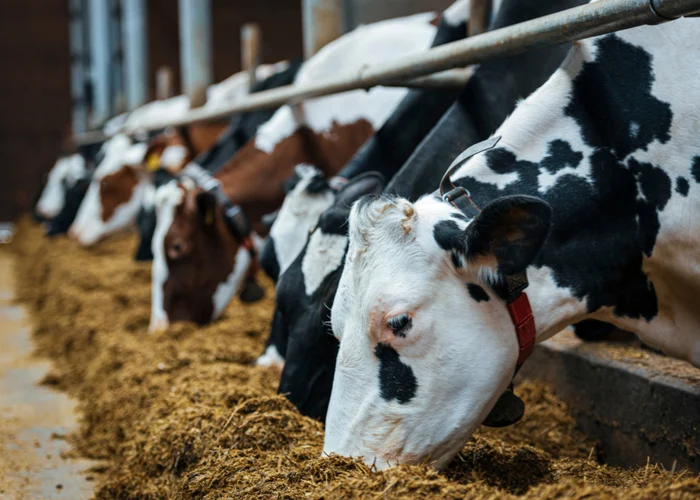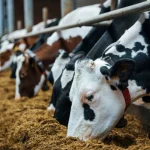As a feed manager or producer, you’re on the front lines of a rapidly changing industry. You face constant pressure from rising ingredient costs, evolving regulations, and a marketplace that increasingly demands transparency and naturally raised products. It’s a complex balancing act, and the old way of doing things is no longer enough.
This isn’t just a niche trend; it’s a massive market shift, signaling a clear consumer mandate for natural production methods. Proactively managing your animal feed ingredients with a natural approach isn’t just an option—it’s essential for ensuring livestock health, meeting market demands, and building a profitable, sustainable operation.
This article will guide you through the core pillars of a natural feed management strategy. We’ll explore the science-backed role of plant-based additives and demonstrate how this approach benefits both your animals and your bottom line.
Key Takeaways
- The conventional approach to feed management is becoming unsustainable due to market pressure to reduce antibiotics, rising costs, and the persistent risks of contamination.
- A natural feed strategy is built on three pillars: meticulous ingredient sourcing, proper storage to prevent contamination, and strategic formulation with plant-based additives.
- Natural additives, such as enzymes and plant-based compounds, directly improve animal gut health, enhance nutrient absorption, and boost overall performance without relying on synthetics.
- Adopting a natural approach not only improves animal welfare but also secures the safety of the human food supply, aligning with the crucial “farm-to-fork” principle.
The Shifting Landscape: Why “Business as Usual” in Feed Management Is No Longer Enough
The challenges facing modern livestock operations are more intense than ever. “Business as usual” has become a high-risk strategy, strained by three primary pressures: escalating feed costs, consumer demand for transparency, and increasingly strict regulations. Producers are expected to do more with less while delivering a product that meets higher ethical and safety standards.
Beyond these market forces, persistent risks within the feed supply chain threaten both animal health and profitability. Microbial contaminants like bacteria and mold can degrade nutrient value and cause illness. Even more insidious are chemical threats like mycotoxins—toxic compounds produced by fungi that can lead to poor growth, reproductive issues, and suppressed immunity in livestock.
Compounding these issues is the global health imperative to reduce antibiotic use. The overuse of antibiotics in livestock is a significant contributor to antimicrobial resistance, a crisis with severe human health implications. According to a report, antibiotic-resistant infections could cause over 10 million deaths annually by 2050 if current trends continue. These intersecting challenges demand a fundamental shift in philosophy—from reactively treating problems to proactively building resilient, healthy animals from the inside out.
The Foundation of Natural Feed Management: 3 Core Pillars
Pillar 1: Meticulous Ingredient Sourcing and Verification
The quality of your finished feed can never exceed the quality of its raw ingredients. This makes meticulous sourcing the non-negotiable starting point for any safety program. It begins with partnering with trusted, vetted suppliers who demonstrate a consistent commitment to quality and can provide comprehensive documentation for their materials.
However, trust must always be accompanied by verification. Implementing a rigorous testing protocol is essential to screen for contaminants before they ever enter your feed mill. This includes screening for mycotoxins, heavy metals, and harmful bacteria. Clear documentation and traceability for every ingredient are not just for regulatory compliance; they provide a crucial record that allows you to quickly identify and isolate any issues in your supply chain.
Pillar 2: Secure Storage and Handling
Once high-quality ingredients arrive at your facility, the next critical step is protecting them from degradation. Moisture, temperature, and pests are the primary enemies of feed quality, creating ideal conditions for mold growth, nutrient loss, and contamination.
Effective storage environments rely on several best practices. Proper ventilation and humidity control are key to preventing moisture buildup. A robust, integrated pest management program helps keep rodents and insects at bay. Equally important is adhering to the “first-in, first-out” (FIFO) principle. Using older stock before newer deliveries ensures that ingredients are always fresh and potent, preventing waste and maintaining the efficacy of your feed formulations.
Pillar 3: Strategic, Science-Backed Formulation
The final pillar moves beyond preventing negatives and focuses on actively adding positives. Strategic, science-backed formulation is about more than just meeting basic nutritional requirements. It’s a proactive strategy designed to maximize nutrient absorption and support the animal’s natural biological systems.
This stands in contrast to a conventional approach that might rely on synthetic inputs or routine antibiotics to manage health challenges. A natural formulation strategy aims to build a resilient animal that can thrive without these interventions. The goal is to use beneficial, plant-based compounds to create an optimal gut environment, enhance digestion, and bolster the immune system, setting the stage for superior health and performance.
The Power of Nature: How Plant-Based Additives Elevate Your Feed Strategy
A truly effective natural feed program involves more than just removing synthetic ingredients. It requires the strategic use of high-quality, plant-based additives to enhance nutrition, support gut health, and proactively prevent common health issues.
Successfully implementing this involves partnering with specialists who provide proven, science-backed solutions. For producers seeking these solutions, it’s crucial to work with a team that guarantees the safest feed for producers and the safest food for consumers. This expert guidance ensures you are using the right additives for your specific challenges.
Enhancing Digestion and Nutrient Absorption with Natural Enzymes
Many essential nutrients in common feedstuffs like corn and soy are locked within complex carbohydrates and proteins that an animal’s digestive system cannot break down on its own. This is where natural feed enzymes become invaluable.
Additives like Naturazyme® contain specific enzymes that act like molecular scissors, breaking down these complex structures. This process unlocks previously unavailable starches, proteins, and minerals, making them accessible for the animal to absorb. The direct benefit for you is a significantly improved feed conversion ratio (FCR), meaning the animal gets more nutritional value from every pound of feed. This not only leads to healthier, more productive animals but also directly lowers your overall feed costs.
Supporting Gut Health and Immunity with Plant-Based Compounds
A healthy gut is the foundation of a healthy animal. The intestines are not just for digestion; they are a critical part of the immune system and the first line of defense against pathogens. Plant-based compounds offer a powerful, natural way to create a resilient gut environment.
Specific additives like Natura Yucca or Natura Betaine work to create a balanced intestinal microbiome, promoting the growth of beneficial bacteria while limiting harmful ones. These compounds also help protect animals during periods of stress, such as weaning, transport, or heat, which can compromise immune function. By supporting gut integrity and immune response, these additives serve as a proactive tool to reduce the incidence of illness and minimize the need for therapeutic interventions like antibiotics.
The Farm-to-Fork Connection: Guaranteeing Safety for Animals and Consumers
Your commitment to natural feed management extends far beyond the farm gate. Safe feed is the first and most critical step in producing safe food for people. By controlling what goes into your animals, you directly influence the safety and quality of the meat, eggs, and dairy products that reach the consumer’s table.
Managing feed ingredients with a natural approach significantly reduces the risk of harmful residues, like antibiotics or mycotoxins, entering the human food chain. This dedication to safety is often formalized through globally recognized quality assurance systems like Hazard Analysis and Critical Control Points (HACCP). Adopting these standards not only protects public health but also demonstrates industry leadership and a commitment to excellence.
Ultimately, this farm-to-fork approach is a powerful marketing tool. It builds deep trust with consumers who are increasingly educated about and invested in how their food is produced. When you can confidently guarantee a safe, transparent, and naturally-raised product, you build a brand reputation that commands loyalty and value in the marketplace.
Getting Started: Your First Steps Toward a Natural Feed Strategy
Transitioning to a natural feed strategy can feel like a major undertaking, but it can be approached in simple, manageable steps. Here’s a practical roadmap to get you started.
- Step 1: Audit Your Current Supply Chain. Begin by thoroughly reviewing your current ingredient suppliers and storage protocols. Look for potential weak points where contamination could occur and assess the traceability of your raw materials.
- Step 2: Identify Your Biggest Challenge. Are you struggling with poor digestion, high feed costs, or stress-related illnesses? Pinpoint your most pressing issue and focus on solving that one problem first. A targeted approach yields clearer results.
- Step 3: Consult with an Expert. You don’t have to do it alone. Seek advice from animal nutritionists or specialists in natural feed solutions. They can help you analyze your operation and develop a targeted, cost-effective plan tailored to your specific needs.
- Step 4: Start with a Pilot Program. Before a full-scale rollout, test a new natural additive on a small, controlled group of animals. This allows you to measure the impact on performance, health, and cost-effectiveness with minimal risk.
Conclusion
In today’s competitive and conscientious marketplace, managing animal feed ingredients with a natural approach is no longer an alternative—it’s a strategic imperative. The pressures of rising costs, consumer demands, and regulatory oversight require a proactive, science-backed philosophy that builds health from the ground up.
By focusing on meticulous sourcing, secure storage, and strategic formulation with powerful plant-based additives, you can achieve remarkable results. This integrated strategy leads to improved animal health and performance, reduced reliance on antibiotics, lower feed costs, and enhanced food safety for everyone.
This approach protects your most valuable assets: your livestock. More importantly, it safeguards the trust of the end consumer who depends on you for safe, wholesome food. By embracing a natural strategy, you can confidently build a more resilient, profitable, and sustainable operation that guarantees safer feed and safer food.










